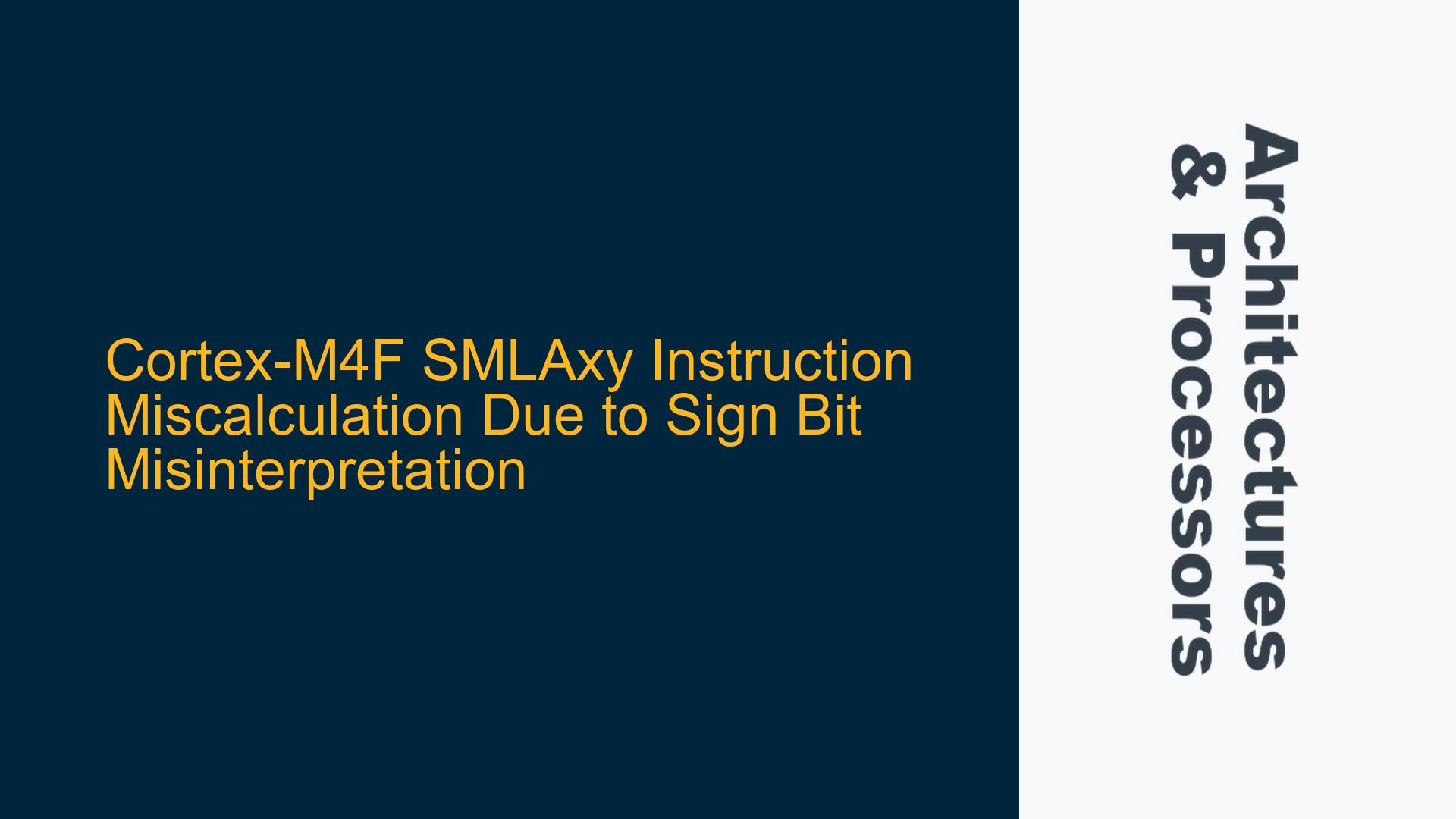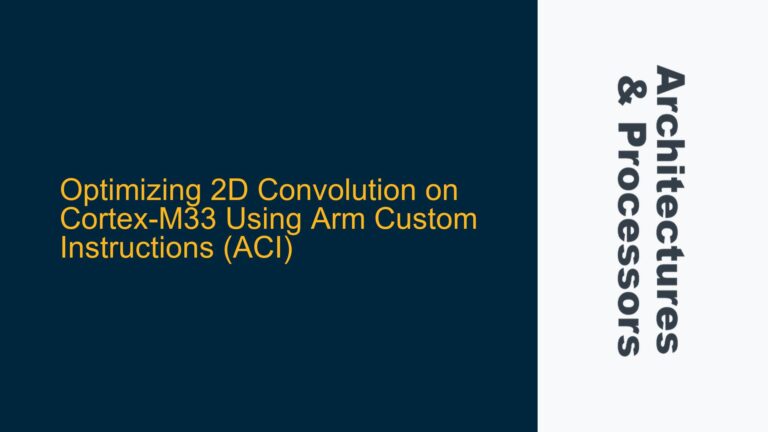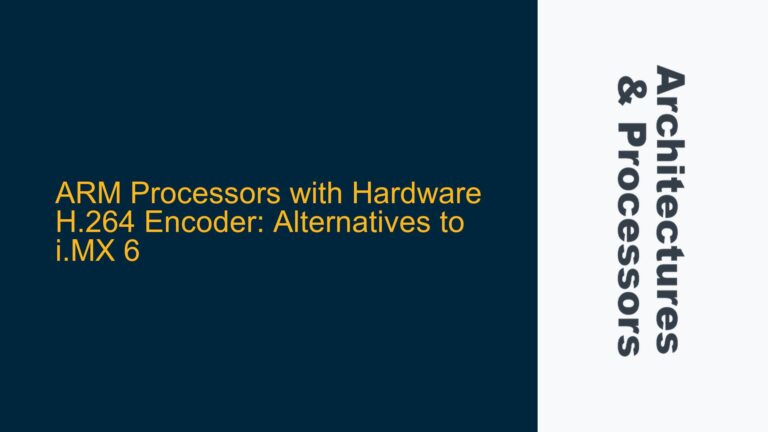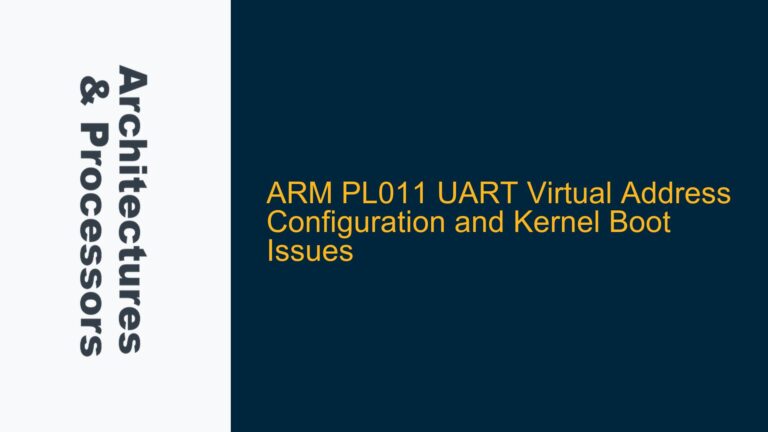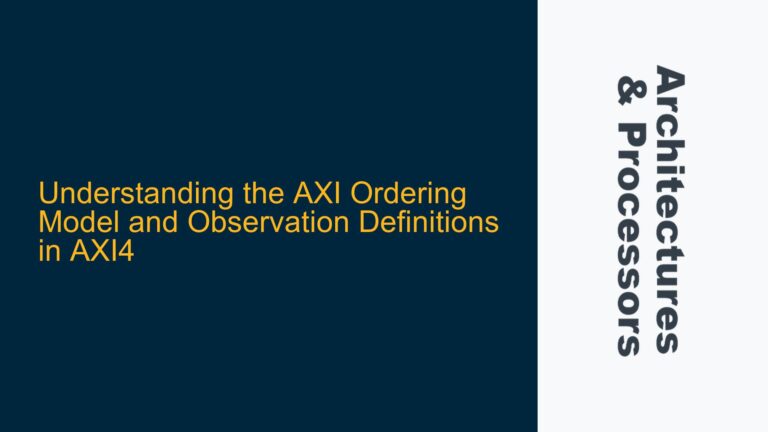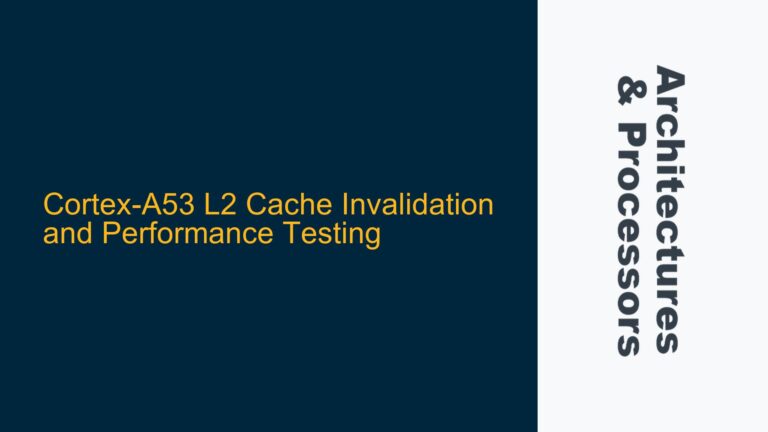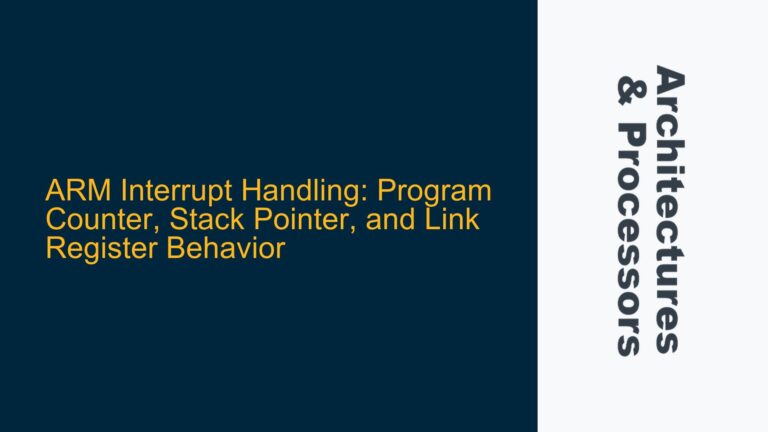ARM Cortex-M4F SMLAxy Instruction Behavior and Sign Bit Handling
The ARM Cortex-M4F processor, a member of the Cortex-M family, is widely used in embedded systems for its balance of performance and power efficiency. One of its key features is the support for DSP (Digital Signal Processing) instructions, which include the SMLAxy family of instructions. These instructions are designed to perform signed 16-bit multiplications and accumulate the results into a 32-bit register. However, a common issue arises when developers misinterpret the handling of the sign bit in these instructions, leading to incorrect results. This post delves into the specifics of the SMLAxy instruction, the role of the sign bit, and how to correctly interpret and use these instructions in your code.
The SMLAxy instruction is part of the ARMv7-M architecture’s DSP extension, which provides a set of instructions optimized for signal processing tasks. The instruction performs a signed multiplication of two 16-bit values, selected from the top or bottom halfwords of two 32-bit registers, and adds the result to a 32-bit accumulator. The final result is stored in a destination register. The instruction is particularly useful in applications such as audio processing, where signed 16-bit data is common.
However, the signed nature of the multiplication introduces a potential pitfall: the sign bit of the 16-bit operands must be correctly interpreted to ensure accurate results. The sign bit is the most significant bit (MSB) of a signed 16-bit value, and it determines whether the value is positive or negative. In two’s complement representation, which is used by ARM processors, a sign bit of 1 indicates a negative value, while a sign bit of 0 indicates a positive value. Misinterpreting the sign bit can lead to incorrect calculations, as the multiplication of two negative values should yield a positive result, while the multiplication of a negative and a positive value should yield a negative result.
Misinterpretation of Sign Bit in SMLAxy Instruction Operands
The core issue in the provided discussion revolves around the misinterpretation of the sign bit in the operands of the SMLAxy instruction. The user observed that certain calculations did not match their expectations, particularly when using operands with the value 0xAAAA. The user initially assumed that 0xAAAA represented a positive value, but in reality, it represents a negative value in two’s complement notation.
In two’s complement representation, the value 0xAAAA corresponds to a signed 16-bit integer value of -21846. This is because the sign bit (the most significant bit) is set to 1, indicating a negative value. The remaining bits represent the magnitude of the value in two’s complement form. When performing signed multiplication, the sign bit must be correctly interpreted to ensure that the result reflects the correct sign and magnitude.
The user’s calculations were based on the assumption that 0xAAAA represented a positive value, leading to incorrect results. For example, when multiplying 0xAAAA by itself, the user expected a positive result, but the correct result should be negative because both operands are negative. This misunderstanding led to discrepancies between the expected and actual results of the SMLAxy instruction.
To illustrate this, consider the following example:
MOV R0, #0x0001
MOVT R0, #0xAAAA ; R0 = 0xAAAA0001 (top halfword = 0xAAAA, bottom halfword = 0x0001)
MOV R1, #0x000A
MOVT R1, #0xAAAA ; R1 = 0xAAAA000A (top halfword = 0xAAAA, bottom halfword = 0x000A)
MOV R2, #0x0001
MOVT R2, #0x0060 ; R2 = 0x00600001 (top halfword = 0x0060, bottom halfword = 0x0001)
SMLATT R3, R1, R0, R2 ; R3 = THW[R1] * THW[R0] + R2
In this example, the SMLATT instruction multiplies the top halfwords of R1 and R0, both of which are 0xAAAA (interpreted as -21846 in signed 16-bit representation), and adds the result to R2. The correct calculation should be:
THW[R1] * THW[R0] + R2 = (-21846) * (-21846) + 0x00600001
The multiplication of two negative values should yield a positive result, but the user’s initial assumption that 0xAAAA was positive led to an incorrect calculation. The correct result of the multiplication is 477,204,516 (or 0x1C7238E4 in hexadecimal), which matches the observed result in the user’s code.
Correct Usage of SMLAxy Instructions with Signed Operands
To avoid the pitfalls associated with the misinterpretation of the sign bit in the SMLAxy instructions, it is essential to understand how signed operands are handled in ARM assembly. The following steps outline the correct approach to using these instructions:
-
Understand Two’s Complement Representation: Before using the
SMLAxyinstructions, ensure that you have a solid understanding of two’s complement representation. This is the standard method for representing signed integers in most modern processors, including ARM. In two’s complement, the sign bit (the most significant bit) determines whether the value is positive or negative. A sign bit of 1 indicates a negative value, while a sign bit of 0 indicates a positive value. -
Interpret Operands Correctly: When loading values into registers for use with the
SMLAxyinstructions, be mindful of the sign bit. For example, if you load a value such as0xAAAAinto a register, recognize that this represents a negative value in two’s complement notation. This is particularly important when performing signed multiplication, as the sign of the operands will affect the sign of the result. -
Verify Calculations: When performing calculations with the
SMLAxyinstructions, verify the results by manually calculating the expected outcome, taking into account the sign of the operands. This will help you identify any discrepancies and ensure that your code is functioning as intended. -
Use Debugging Tools: Utilize debugging tools available in your development environment to inspect the values of registers and the results of instructions. This can help you identify issues related to sign bit misinterpretation and other potential errors in your code.
-
Consult Documentation: Refer to the ARM Architecture Reference Manual for detailed information on the behavior of the
SMLAxyinstructions and other DSP instructions. The manual provides comprehensive descriptions of each instruction, including how operands are interpreted and how results are calculated.
By following these steps, you can ensure that your use of the SMLAxy instructions is correct and that your calculations are accurate. This is particularly important in applications where precision is critical, such as audio processing, where even small errors can lead to significant issues in the final output.
In conclusion, the SMLAxy instructions in the ARM Cortex-M4F processor are powerful tools for performing signed 16-bit multiplications and accumulations. However, their correct use requires a thorough understanding of two’s complement representation and careful attention to the sign bit of operands. By following the guidelines outlined in this post, you can avoid common pitfalls and ensure that your code produces accurate and reliable results.
